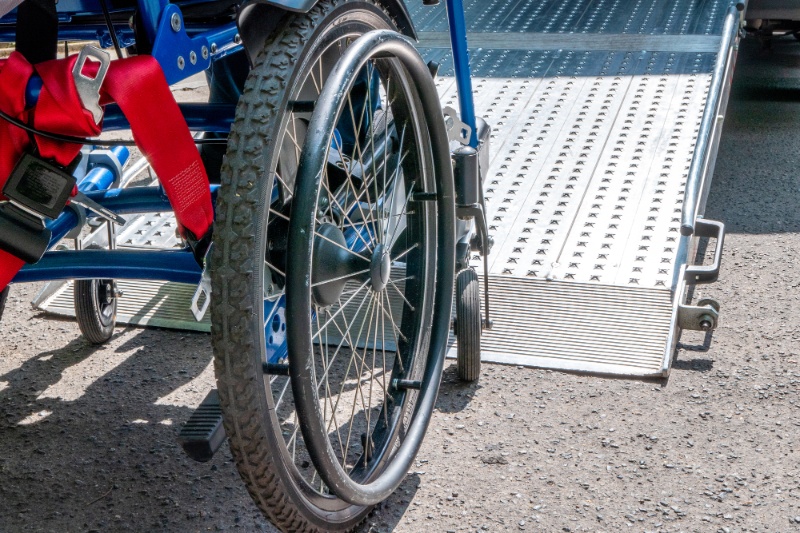When it comes to shopping around for wheelchair ramps, choosing the right one is vital for individuals with limited mobility. Ensuring that everything from the ramp’s height to its structure is just as it should be, will ensure safety, accessibility and independence in daily life.
With an Irish Wheelchair Association survey revealing that 66% of people with physical disabilities report difficulty accessing public buildings around the country, the need for more access ramps is an urgent one. However, despite the urgency, it’s vital to ensure the correct ramp is chosen to suit the intended environment and those who will be using it.
In this article, we explore the key factors to consider when choosing a wheelchair ramp, helping you make an informed decision and find the perfect wheelchair ramp for your needs.
Assessing accessibility needs
Assessing the specific accessibility needs of the individual is crucial when selecting a wheelchair ramp. Factors like the type of mobility device that will be used on the ramp, the location of installation and the desired incline must be considered to ensure a seamless fit. A thorough evaluation of all of these factors will guarantee optimal functionality of the ramp and safeguard those who will be using it.
Types of wheelchair ramps
There are various types of wheelchair ramps on the market, with each one catering to different accessibility requirements. The most commonly used wheelchair ramps include:
- Threshold ramps – ideal for overcoming small obstacles like door thresholds, offering portability and ease of installation
- Modular ramps – these provide versatility and can be configured to fit various spaces, making them suitable for both temporary and permanent use
- Portable ramps – these are lightweight and foldable, perfect for travel and on-the-go accessibility
Each of the above presents unique features and benefits, allowing those with limited mobility to find a ramp that suits their specific needs.
Weight capacity and durability
Safety should be the utmost priority when selecting a ramp, which means ensuring the ramp can support the combined weight of the individual and their wheelchair, as well as a carer in certain circumstances. When selecting a ramp, it’s important to be aware of the weight of the mobility device that will be used, along with the weight of the people using it. Choose a ramp with sturdy construction and appropriate weight capacity, guaranteeing a secure and reliable mobility solution for daily use.
Length and incline
Determining the appropriate length and incline of the ramp will lend itself to smooth and safe accessibility. The height of the obstacle, available space for installation, and the user’s strength and capabilities are all factors that should be considered. A well-calculated ramp length and gentle incline will promote comfortable manoeuvring for people with limited mobility.
Safety features
When choosing a wheelchair ramp, a checklist for essential safety features should be carried out. Recommended safety features of wheelchair ramps include:
- Non-slip surfaces provide traction and stability, preventing accidents during wet or slippery conditions
- Handrails that offer extra support and balance for users, especially on longer ramps
- Raised edges and edge protection to ensure a secure path, reducing the risk of accidental falls
Installation and portability
It’s important when selecting a wheelchair ramp to look for those with easy installation features for convenience and time-saving benefits. In some cases, professional assistance might be required to ensure proper fitting and safety. In the case of temporary ramps, these should be portable, allowing users to move them easily to different locations for maximum flexibility.
Maintenance and longevity
The amount of maintenance required and the longevity of the product are key considerations when choosing a wheelchair ramp. Durable materials, like aluminium or rubber, promote a lengthier ramp lifecycle, as well as resistance to damaging weather conditions. Regular maintenance, such as cleaning debris and checking for wear, will also help to prolong the ramp’s longevity while reducing the risk of accidents or injuries for those using the ramp.
Cost and budget
The cost of a wheelchair ramp in comparison to the buyer’s budget will play a big role in the final decision. After all, while quality and desired features are hugely important, budgetary constraints must also be taken into consideration. It’s worth putting in the extra effort and making lots of enquiries with suppliers to find a ramp that meets safety standards and offers essential features but also falls within budget.
O Neill Healthcare – your supplier of specialist wheelchair ramps
Seeking professional advice from reputable suppliers or healthcare professionals can simplify the search for the ideal wheelchair ramp. They possess expert knowledge to assess individual needs accurately and recommend the most suitable ramp type, ensuring safety and accessibility.
At O Neill Healthcare, we offer a diverse range of high-quality access ramps designed to accommodate various requirements. By browsing our products online or chatting with our experts over the phone, those with limited mobility and their families or carers will find a variety of solutions tailored to their unique situations.
Take the first step towards greater independence today – contact us for further assistance and guidance surrounding a wide range of mobility aids and other healthcare solutions.



